|
Flowers of many plants are being used since antiquity in traditional cooking, to bring flavor, taste and color into the food preparations. They include vegetable flowers, herbal flowers, fruit flowers and ornamental flowers known for their culinary or medicinal properties. Today eating fresh flowers are becoming popular much as a garnish but also as an integral part of a dish. Squash flowers can be fried or stuffed, other edible flowers like Rose and Pansy are candied; many more are served frozen in ice cubes; made into jellies and jams; used in teas and other beverages; added to cheese spreads, herbal butters; and among ingredients for baking, syrup, flower-scented sugars and new salad dressings. Nonetheless some flowers are toxic, others may be edible only after appropriate preparations. CAUTION: • Remember that not every flower is edible. • Never harvest flowers growing by the roadside. • Do not eat flowers from florists, nurseries, or garden centers, they might contain pesticides. • Identify the flower exactly and eat only edible flowers and edible parts of those flowers. • Flowers served with food at a restaurant might not be edible. • Never use non-edible flowers for garnish on plates or for decoration. • Prepare correctly your fresh edible flowers. How to prepare flowers: 1- Shake well each flower to dislodge insects hidden in the petal folds. 2- Separate the flower petals from the rest of the flower and keep the edible part just prior to use. 2- Wash the flowers by putting them in a strainer placed in a large bowl of water. 3- Drain and allow to dry on absorbent paper. 4- Do not expose to direct sunlight. http://whatscookingamerica.net/EdibleFlowers/EdibleFlowersMain.htm http://www.ces.ncsu.edu/hil/hil-8513.html http://www.culinaryblossoms.com/m_1.asp http://www.treehugger.com/green-food/fresh-flowers-in-food-taste-blooming-delicious.html Common edible flowers
•Artichoke (Cynara scolymus, flower bud) Broccoli and Cauliflower (Brassica oleracea, flower buds) •Caper (Capparis spinosa, flower buds) Chamomile (Chamaemelum noblis, flowers for tea in moderation) •Chives (Allium tuberosum, lowers or buds) •Chrysanthemum* (Chrysanthemum coronarium, petals) •Citrus blossoms (lemon, orange, lime, grapefruit) •Clover (Trifolium spp, flowerheads, soaked before or boiled) Daisies (Bellis perennis, quills) •Dandelions* (Taraxacum officinale, leaves, roots, petals, buds) •Daylilies (Hemerocallis buds, flowers, petals) Elderflower (Sambucus spp, blossoms for drink) •Hibiscus (Hibiscus rosa-sinensis, edible garnish) Honeysuckle (Lonicera japonica, petals ) •Jasmine (Jasminum officinale, is only edible species and for tea) •Lilac (Syringa vulgaris in salads) Nasturtium (Tropaeolum majus blossoms and seeds) •Pansies (Viola x Wittrockiana flowers, petals) •Pot Marigold- Signet (Calendula officinalis, petals with white heel removed) •Roses (Rosa, petals with white heel removed, rose hips) •Sunflowers* (Helianthus annuus, petals, seeds) •Violet (Viola tricolor leaf and flowers in salads, candied flowers for pastry decoration, small amounts) •Zucchini blossoms (Curcubita pepo blossoms) * Only the petals are edible, pollen is highly allergenic Flowers to decorate a dessert - Apple blossom, clover, mint flowers, pansies, rose buds and petals, violets. Flowers you can eat whole -Alliums (leeks, chives, garlic, garlic chives), Basil, Clover, Dill, Fennel, Honeysuckle, Johnny-Jump-Up (Viola tricolor), Lavender, Mint, Rosemary, Runner bean, Sage, Savory, Thyme. For recommended plants with edible flowers: http://www.ext.colostate.edu/pubs/garden/07237.html For vitamins in flowers: http://articles.mercola.com/sites/articles/archive/2012/04/18/42-edible-flowers.aspx For a list of researched edible flowers: http://www.thompson-morgan.com/edible-flowers Persian Honey Almond Brittle How to make Sohaan Assali
Ingredients : 1 cup fine sugar 3 tablespoon thick honey 4 tablespoon cooking oil 1/2 cup hot water or rose water 1 teaspoon saffron 1 -1/2cup sliced blanched almonds 1/4 cup sliced unsalted pistachios Dissolve ground saffron in hot water. Dissolve sugar in hot water- or rose water- and add honey and cooking oil. Cook the mixture over high heat for 15 minutes or until sugar turns golden, stirring gently a few times. The mix becomes brittle. Add almonds stirring twice until almonds also turn golden. Avoid too much stirring or almonds will lose shape. Add saffron and mix gently and lower the heat. Pour a teaspoon of your Sohaan mix on an oiled flat tray , at this stage the mix should become solid quickly. Keep the mixture over low heat. Continue to pour teaspoon portions on the tray and place a few slices of pistachio on top. Allow to cool. Separate the dried Sohaan from the tray using a knife and place in a tight box. Keep in dry place. Tea is the most widely consumed beverage in the world, after water. Tea has historically been promoted for having a variety of positive health benefits. The "herbal tea" usually refers to infusions of fruit or herbs made without the tea plant.
Tea is prepared by pouring hot or boiling water over cured leaves of the tea plant, Camelia sinensis, native to East and South Asia. The beverage likely originated in China with the earliest records of tea consumption dating to the 10th century BC. It was introduced to Portuguese in 16th century, became popular in Britain later and there from was introduced to India for cultivation. Tea plants are propagated from seed and cutting; it takes about 4 to 12 years for a tea plant to bear seed, and about three years before a new plant is ready for harvesting. Tea plants require rainfall and acidic soils. Many high-quality tea plants are cultivated at elevations of up to 1,500 m (4,900 ft) above sea level: at these heights, the plants grow more slowly and acquire a better flavor. A tea plant will grow into a tree of up to 16 m (52 ft) if left undisturbed, but cultivated plants are pruned for ease of plucking. Only the top 1-2 inches of the mature plant are picked. These buds and leaves are called "flushes“. A tea plant will grow a new flush every seven to 15 days during the growing season, and leaves that are slow in development always produce better-flavored teas. Teas are divided into categories based on how they are processed. There are at least six different types of tea: white, yellow, green, oolong and red and black. Some varieties, such as traditional oolong tea and Pu-erh tea, a post-fermented tea, can be used medicinally. Tea contains catechins, a type of antioxidant. In a freshly picked tea leaf, it can comprise up to 30% of the dry weight. Catechins are highest in concentration in white and green teas, while black tea has substantially fewer due to its oxidative preparation. Caffeine constitutes about 3% of tea's dry weight, depending on type, brand, and brewing method. Tea also contains small amounts of theobromine and theophylline. Fluoride and aluminium have also been found to occur in tea, with certain types of brick tea made from old leaves and stems having the highest levels. This occurs due to the tea plant's high sensitivity to and absorption of environmental pollutants. The widespread form chai comes from persianچای chay. This derives from Mandarin chá, which passed overland to Central Asia and Persia, where it picked up the Persian grammatical suffix -yi before passing on to Russian, Arabic, Urdu, Turkish, etc. The words that various languages use for "tea" reveal where those nations first acquired their tea and tea culture. Read more: http://en.wikipedia.org/wiki/Tea Dizi (dee-zee) is a traditional Persian food named after the ware it is served in. Dizi is a thin soup or ‘Abgousht’, that has been cooked for centuries in Iran and served most often in Tea Houses around the country but recently this traditional food is sold as a fast food by popular chain restaurants in big cities.
The long preparation of Dizi is done in special handmade terracotta, metal or stone ware and the recipes vary a lot depending on the individual or regional taste. Dizi consists of fat lamb meat (1 ½ pound), chickpeas + white beans (1cup), whole onions (2 boiled until soft and removed), potatoes (4-5 small cut in half), and tomatoes (3 added last), spiced up with garlic (1 clove), dried lime (some), tomato paste (2 Tbsp), turmeric, cinnamon, salt and pepper (as desired). The Dizi is let in the oven at low temperature. Once Dizi is ready, the juice is drained and is served with rice or flat bread, while the rest is pounded and eaten along with bread and fresh herbs, pickles or chutney, or sandwiched when cold with white cheese and herbs or with salad leaves and fresh lemon or sour orange juice, etc. http://mypersiankitchen.com/ab-goosht/ http://en.wikipedia.org/wiki/Abgoosht  Almost all recipes of omelet or kookoo, and salads and yogurt based foods are vegetarian and prepared with no meat items. The following Persian recipes are very popular Guilac dishes. They are made of vegetables, herbs and egg and are used as vegetarian gourmet food. Shesh-and-oz-e-havij Ingredients: carrots 2 pounds, eggs 6, cooking oil 1/4 cup, lemon juice 2Tsp, sugar1/4 cup, water 1/2 cup, salt and pepper 1. Fry grated carrots over medium heat using the cooking oil in a nonstick saucepan and stir often until golden 2. Mix sugar, warm water, lemon juice and add to carrot, cover and cook for 15 minutes over low heat 3. Uncover and let the extra water to evaporate over higher heat 4. Remove the pan from the heat 5. In the same pan, divide the carrots into 6 parts and leave a place for each egg between them 6. Place the pan over heat again and break each egg into its place Serve readily with rice or bread Brief on Persian Cooking Persian or Iranian food is prepared with very diverse items. Cereals, grains, vegetables, herbs, fruits, spices and nuts are used frequently in popular recipes: polow, chelow, stews, kabob, kookoo... There are regional variations to each traditional recipe and so there is a wide range of combination open to one's choice. The following tips are to help you feel confident and try to prepare your own persian foods and enjoy. Cooking Omelet or Kookoo
Eggplant, squash, green beans, faba beans, green peas, spinach, cauliflower and many other vegetables are used to make omelet or Kookoo. For making an omelet you need to beat well the eggs (4-6), add baking soda (1tsp), salt and pepper and spices. Add already cooked tender vegetables of your selection (1-2cups). Mix and pour into hot nonstick pan over high heat, lift the sides to check thickening of the egg and fold the omelet when the bottom side is lightly brown, turn once. Serve immediately. Tips for fast cooking omelet 1. Use nonstick saucepan 2. Heat low cholesterol vegetable oil for cooking 3. Chop broccoli and cauliflower cook fast in boiling water 4. Chop eggplant, squash, onion and fry while stirring 5. Smash boiled potatoes 6. Chop finely the green beans and boil in water until tender 7. Use very finely chopped fresh dill,coriander, parsley, Persian leek 8. Add a bit of butter (1tsp) for flavoring A sandwich is a popular food item as the most practical package lunch for taking to work, school or picnics.
You can use many types of bread for making your sandwich and the filling can be varied and adaptable.The modern sandwiches are prepared with breads coated with condiments and contain a combination of salad vegetables, meat, cheese, and a variety of sauces or savoury spreads. There is a list of 64 regional sandwich styles in the wikipedia article on sandwich: http://en.wikipedia.org/wiki/Sandwich Tips for making healthy delicious sandwiches 1- Choose good whole grain sandwich bread, or Pita and 'Lavash' flat bread. 2- Choose low fat cheese. 3- Try vegetable based high fiber spreads. 4- Prepare grated walnut, cheese and chopped fresh herbs in small quantities ahead, and keep refrigerated or use readily. 5- Try chopped fresh herbs and roasted vegetables. 7- Cut your sandwich in smaller portions before wrapping, and keep in cold place.
Photography: http://en.wikipedia.org/wiki/Vegetable_juice Fruits Juice Properties * Apple : muscular and nerves tonic, diuretic, anti-rheumatic, anti-gout, intestinal antiseptic, blood cleansing. At large quantities ease constipation. Is also added to other juices for flavor. Apricot : full of vitamins and minerals. Help reduce physical and intellectual fatigue, anemia and convalescences. Barberry: strong sedative. Recommended against diarrhea (cholera), fever, anemia and also hangovers. It is efficient in curing malaria and the lung infections. Decreases the blood pressure and is a uterine stimulant. Add water for milder acidic taste. Bilberry: particularly indicated in the treatment of the intestinal infections: enteritis, colitis, diarrhea, dysentery, putrefaction, coli bacillus. It is an effective uric acid dissolvent. Improves night sight. Black Current: anti-rheumatic, anti-arthritic, anti-gout. Stimulates liver functions. Cherry: energizer remineralizing and regenerating. Recommended in arteriosclerosis, gout, and arthritis, blood cleansing and anti-rheumatic. Anti-aging by its purifying and detoxifying properties. Cranberry: appetizing and blood cleansing. It acts on blood circulation, hepatic functions, digestive and urinary system, easing rheumatism and gout. Mixed with water is an excellent drink for feverish conditions. Grape: called “Vegetable Milk”. High in calories it is stimulant and re-mineralizing, a strong detoxifier recommended in arthritic, rheumatic, gout and excess blood urea, hypertension, enteritis, and hepatic congestion conditions. A few days of daily use of 1000-1200g of the grape juice eases overwork or obese discomfort. This cure could be extended to 2-3 weeks with average daily drinking dose of 1200-1400g, in serious cases. Grapefruit: aperitif and strong hepatic stimulant. Improves blood fluidity and protects veins. Lime/Lemon: highly aromatic and refreshing. Its daily use is recommended for blood cleansing. Is found to possess antibiotic, anti-carcinogenic and detoxifying properties. May be used alone or mixed with other juices. Mandarin or Tangerine: tonic and sedative. Contains bromine. Makes pleasant changes to other juices. Melon: refreshing and alkalizing. Friend of hepatics, detoxifying. Contains minerals: iron, phosphorous and calcium, also vitamins A and C. Mulberry: laxative. A refreshing drink used alone or mixed with water to help rheumatic, gout, dermatitis and fever conditions. Mixed with cranberry juice and some water, it is very refreshing and is recommended in all urinal inflammations. Orange: popular refreshing and tonic drink. It also improves blood fluidity and vascular strength. For a greater effect, blend in pieces of the skin with the pulp. Peach: mild diuretic and laxative, also brings great help to dyspeptics. Pear: blood cleansing, diuretic and uric acid eliminator. It is astringent and is used to cure diarrhea. It also re-mineralizes the body and is indicated in conditions such as: anemia, fatigue, tuberculosis. Pineapple: contains vitamins, microelements and minerals and a strong digestive ferment. The fruit juice is recommended in inflammatory conditions and has diuretic and detoxifying properties. Plum: nerves stimulant, energetic, diuretic, laxative and detoxifier. Recommended use in rheumatism, arteriosclerosis, general weakness conditions. Pomegranate: a tonic for the heart. Healthful counterbalance to a diet high in sweet-fatty components. Contains tannins, potassium, vitamin C and B5. Helpful in coronary artery, diabetes and cancer, and against intestinal infection and parasites. Raspberries: rich in antioxidants. Brings taste and color in a mixed juice drink and may accompany any juice, i.e. apple, orange… Strawberry: mineralizing. Is anti-rheumatic and anti-gout through eliminating uric acid from the body. Stimulating hepatic functions, regulating nerve system and is used for arteriosclerosis. Watermelon: diuretic and refreshing. Rich in lycopen, carotenoid which is known to protect against prostatitis. Contains vitamin C. Vegetables Juice Properties * |
|
Archives
July 2020
Categories
All
|
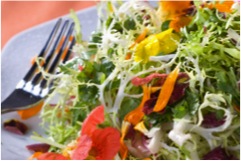
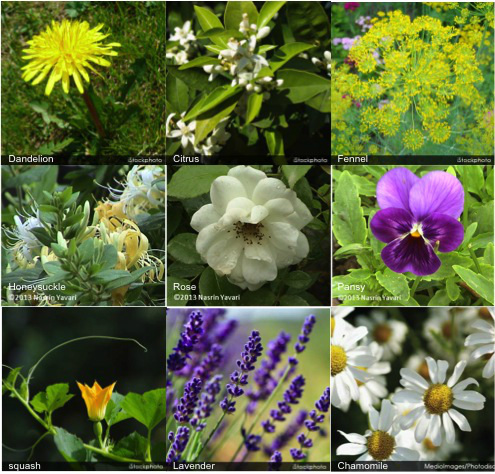
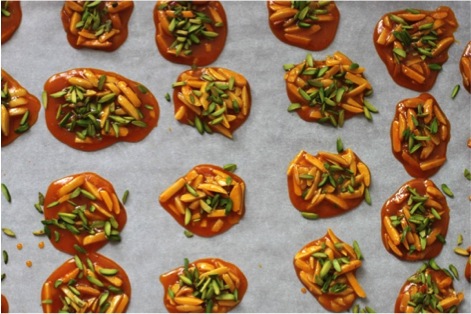
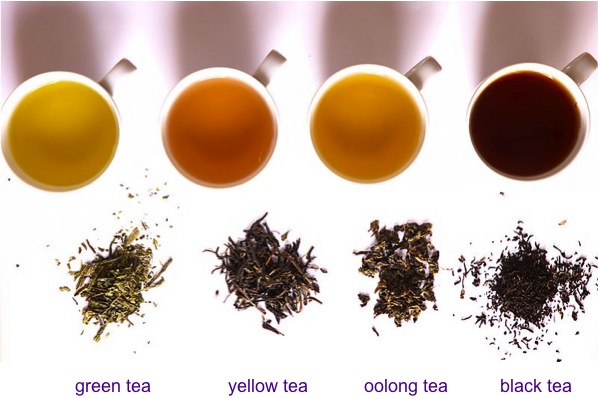
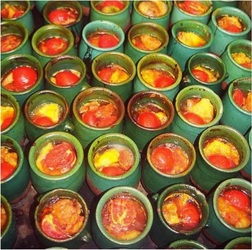
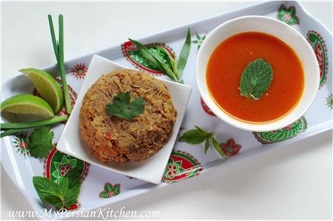
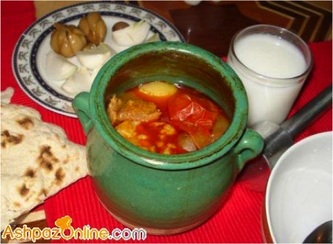
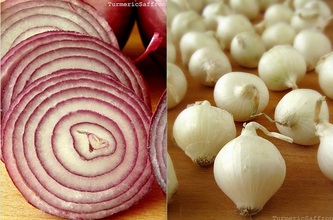

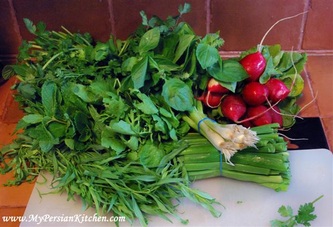
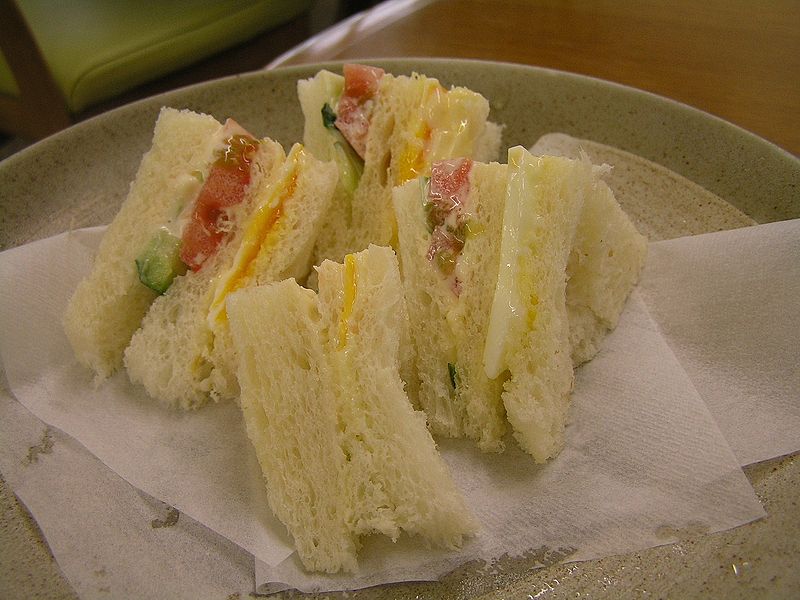
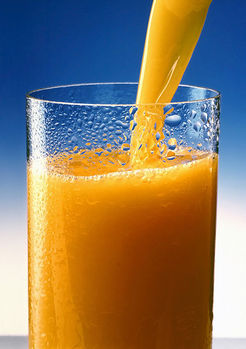
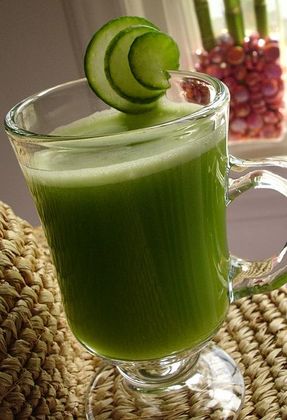
 RSS Feed
RSS Feed
